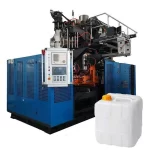3D printing, also known as additive manufacturing, is a revolutionary technology that has gained significant popularity in recent years. It has the potential to transform various industries by enabling the creation of complex and customized objects with unprecedented ease and efficiency. In this article, we will explore how 3D printing works and examine its distinct steps and processes.
At its core, 3D printing involves the creation of three-dimensional objects through the layer-by-layer deposition of materials. Unlike traditional manufacturing methods that involve subtracting material from a solid block, 3D printing builds objects from the ground up, offering greater design flexibility and reduced production time.
1. Designing the Object
The first step in the 3D printing process is designing the object using Computer-Aided Design (CAD) software. CAD software allows designers to create intricate and detailed models, specifying dimensions, shapes, and other specifications.
Designers can either create original designs or modify existing ones to suit their requirements. The versatility of CAD software enables the creation of objects ranging from simple prototypes to complex structures, making it an essential tool in the 3D printing process.
2. Preparing the Design for Printing
Once the design is finalized, it needs to be prepared for printing. This involves converting the digital design into a format that the 3D printer can understand. The most commonly used format is the Standard Tessellation Language (STL), which represents the geometry of the object as a collection of interconnected triangles.
In addition to converting the design into the appropriate format, the design may also need to be optimized for printing. This includes tweaking parameters such as wall thickness, support structures, and infill density. Optimizing the design ensures better print quality and minimizes the risk of failure during the printing process.
3. Selecting the Printing Technology
There are various 3D printing technologies available, each with its strengths and limitations. The choice of printing technology depends on factors such as desired resolution, material compatibility, and cost.
Some of the commonly used 3D printing technologies include:
Fused Deposition Modeling (FDM)
FDM is one of the most widely used 3D printing technologies. It involves the extrusion of a thermoplastic filament through a heated nozzle. The nozzle moves in a controlled manner, depositing the molten filament layer by layer to create the object.
Stereolithography (SLA)
.webp)
SLA utilizes a liquid resin that is hardened by selective exposure to ultraviolet light. A build platform gradually lifts the object out of the resin tank as each layer is cured. SLA offers high-resolution prints and is ideal for creating detailed models or prototypes.
Selective Laser Sintering (SLS)
SLS uses a laser to selectively fuse powdered material, typically nylon or metal, to create the object. The unused powder acts as support, eliminating the need for additional support structures. SLS is known for its ability to produce strong and durable parts.
4. Printing the Object
Once the design is ready and the printing technology is selected, the next step is to prepare the 3D printer for printing. This involves loading the appropriate material, calibrating the printer, and ensuring that all settings are correct.
During the printing process, the 3D printer reads the design file and precisely controls the deposition of material layer by layer. The printer moves according to the defined path, gradually building the object from the bottom up.
The speed of printing varies depending on factors such as object complexity, material type, and desired print quality. Large and intricate objects may take several hours or even days to complete, while smaller and simpler objects can be printed in a matter of minutes.
5. Post-Processing
Once the object is fully printed, it may require post-processing to achieve the desired finish. Post-processing techniques include removing support structures, sanding, polishing, painting, or applying additional coatings.
Post-processing plays a crucial role in enhancing the visual appeal and functionality of the printed object. It allows for the removal of imperfections and the addition of desired surface finishes, making the object ready for its intended use.
3D printing has revolutionized the way objects are designed and manufactured. Its additive nature and versatility have opened up new possibilities in various industries, from aerospace and automotive to healthcare and fashion.
.webp)
Understanding how 3D printing works is essential for harnessing its full potential. By following the distinct steps of designing, preparing, selecting the technology, printing, and post-processing, one can unlock the power of additive manufacturing and create objects with precision, complexity, and efficiency like never before.
As technology continues to advance, we can expect further refinements and innovations in the field of 3D printing, leading to even more incredible feats of creativity and production.
https://iflatiron.com/


